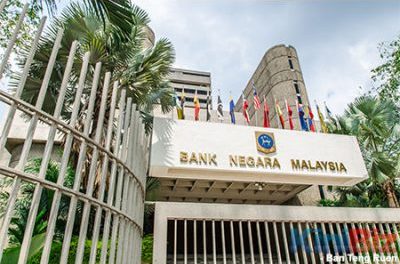KPKT to review Bumiputera quota policy, release mechanism
The Housing and Local Government Ministry (KPKT) wants to review the Bumiputera housing quota policy and the release mechanism to ensure that they are in line with current market needs. “It’s time to review the [release mechanism] policy as I understand some states even have a Bumiputera quota up to 70% for a housing development,” said KPKT Minister Zuraida Kamaruddin. The issue has often been raised by developers claiming that many unsold properties are Bumiputera units due to a lack of an auto-release mechanism while different states impose different quotas (between 30% and 70%) and requirements from developers. The release mechanism for Bumiputera quota units also varies by state with developers having to apply for the release. (The Edge Markets)
Stiglitz: Good taxes can spur Malaysia’s economic growth
There are many kinds of good taxes that could be introduced to stimulate Malaysia’s economy in order to create a fair society as it strives to tide over its RM1 trillion debt, said Nobel prize-winning economist Joseph Stiglitz. He cited them as inheritance taxes, capital gain taxes and property taxes for large holding properties, which were actually good for the economy and society. “Also I think carbon tax is a very good tax because it encourages the growth of green economy and can move the country towards a more innovative and green society,” he said. Stiglitz, a former World Bank chief economist, and Yilmaz Akyuz, a former Geneva-based South Centre chief economist, called on Prime Minister Tun Dr Mahathir Mohamad to discuss major economic issues confronting Malaysia and the world as well as the potentials for global stability. (The Star Online)
Ministry wants more state land for affordable homes
In a bid to lower the cost of building affordable houses, the Housing and Local Government Ministry said it has requested state governments to disclose vacant lands available for such development. Its minister Zuraida Kamaruddin yesterday said that only 27 out of 127 existing affordable housing projects are being built on state-owned land. For new affordable housing projects, Zuraida said each development needs at least 10 acres from each state government to be allocated. The federal government is also looking at land under the Federal Lands Commission to be released for development, as well as land owned by different ministries. (The Edge Markets)
Government should look into adopting blockchain in property registration
Blockchain is the way forward to solve land and property registration issues, including fraudulent transactions in the country. SysCode Sdn Bhd CEO Reza Ismail said the distributed ledger technology – which was invented to support the bitcoin cryptocurrency – could help the authorities in keeping, retrieving, safeguarding and maintaining the integrity of data in the ecosystem. The use of the smart contracts application would prevent land title records from being exposed to fraud and human errors. “Smart contracts application will integrate land registry transactions in one system and make it more difficult for data to be forged,” he said. For example, in a land transaction process, both the seller and buyer will enter into a digital contract within the blockchain, which is witnessed and approved by the appointed legal entities. An encrypted digital copy of the land title is stored in the blockchain, thus no parties can amend any information of the land without the original participants’ agreement. (The Malaysian Reserve)
Malaysia first in region to eliminate mother-child HIV, syphilis transmissions
Malaysia has become the first country in the West Pacific region to successfully reduce mother-to-child transmission of HIV and syphilis until it is no longer a public health problem. This makes Malaysia only the 12th country in the world to receive the eMTCT validation certificate from the World Health Organisation (WHO). Health Minister Dr Dzulkefly Ahmad said the recognition marks Malaysia’s ascent to having achieved a major milestone in healthcare standards, as mother-to-child HIV transmissions were among the main causes of HIV infections among children. Without intervention, around 30% to 45% of children born to HIV-positive mothers would be infected in the womb, during childbirth or via breastfeeding. (NST Online)





